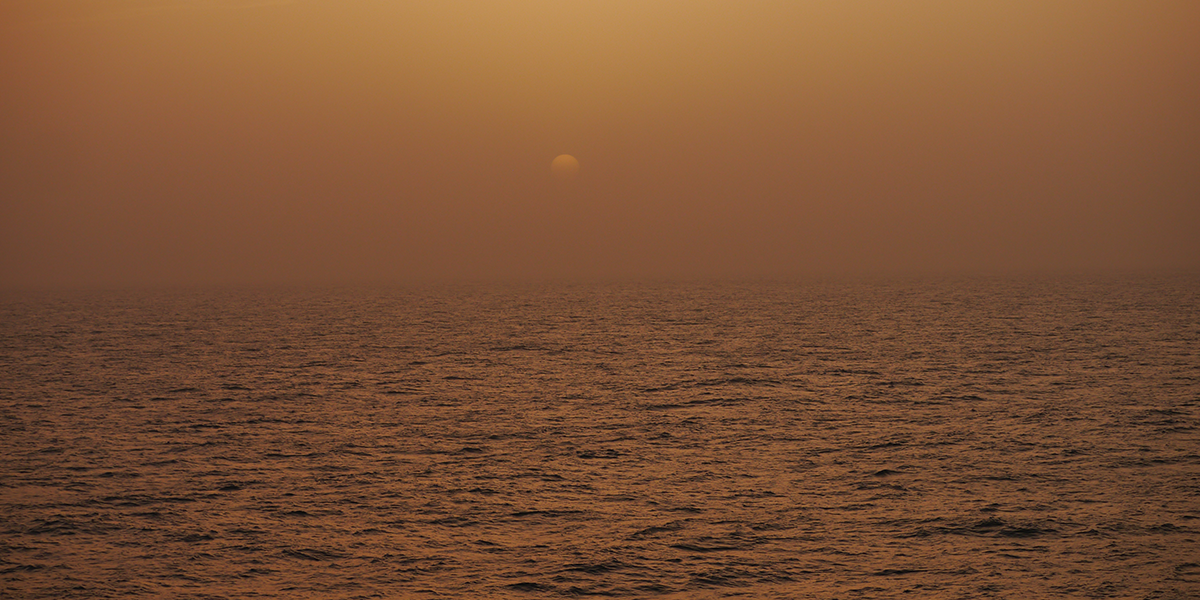Seasonal dust-induced productivity changes
Saharan dust is thought to stimulate primary productivity in the oligotrophic Mediterranean Sea. This relationship, however, and its response to future climate change, is hard to quantify due to (seasonal) variability in e.g., 1) dust-source and associated nutrients, 2) dry- and wet dust deposition, and 3) (sub)surface phytoplankton composition and downward carbon fluxes. This project will combine the analysis of Saharan dust and molecular phytoplankton markers in a 30-years long (ongoing) collection of sediment trap material with satellite and remote-sensing data to unravel and quantify dust-driven ocean productivity in the Mediterranean Sea.
|
|
|
The crossover of aeolian sedimentology and lipid biomarkers in sediment trap material will lead to fertile grounds for understanding marine productivity in the Mediterranean Sea. |
| Jan-Berend Stuut, Francien Peterse |

Project Team
Collaboration partner:

Project description
The occurrence of dust-related Fe fertilization has been demonstrated in high nutrient-low chlorophyll (HNLC) oceans1, but the biogeochemical effect of dust delivery, its sensitivity to future climate change and function in the global biological carbon pump are less well understood for low nutrient-low chlorophyll (LNLC) environments, which constitute 60% of the global ocean2. The LNLC Mediterranean Sea (MedSea) is the largest receiver of dust/m² worldwide3, mostly from the Saharan Desert. However, the episodic nature of dust events makes them difficult to study and to quantify their impact4. Therefore, the effect of dust-fertilisation is often studied using satellite imagery and mesocosm experiments5. These studies have revealed that not all dust events in the MedSea are followed by enhanced primary production, like in HNLC environments6.
It has been suggested that the mode of dust deposition may play a role, where wet deposition appears to increase the bioavailability of nutrients compared to dry deposition7. In addition, when dust-related nutrients stimulate heterotrophic bacteria instead of phytoplankton growth, this would result in enhanced remineralization, and thus a reduction of C-export to the ocean floor, even weakening the biological pump8. However, long-term in situ measurements and water column profiles required to validate these processes are scarce and unevenly distributed in time and space.
Furthermore, satellite data are restricted to surface-ocean processes, and do not detect variations in e.g., the depth of the chlorophyll maximum, the phytoplankton community composition, or vertical fluxes of nutrients and organic matter. This limits our understanding of -and links between- seasonal and dust source-related nutrient dynamics, primary production, and subsequent C-transfer to the ocean floor as they occur in the natural environment9.

Google Earth map of the central Mediterranean Sea showing the locations of the sediment trap sites that will be used in this project. The overlay of a satellite image (©NASA) shows a two-colour dust outbreak from Libya on 26 October 2007.
Aim and approach: This project aims to identify and quantify the relationships between Saharan-dust deposition (wet/dry), phytoplankton response, and C export in the Mediterranean Sea in the present, past and future using an exceptional sediment-trap time series of biweekly collected Saharan dust and settling phytoplankton remains (partly at 500m, 1500m, and 2500m water depth) since the early 1990’s, complemented with sediment cores and following a unique interdisciplinary approach, combining:
- sedimentology – mass for dust fluxes; particle size for reconstruction of wind intensity; particle size, chemistry/mineralogy and radiogenic isotopes for wet vs dry deposition and provenance;
- biogeochemistry – plant waxes and biomass burning markers for dust provenance and dust-source environmental conditions; concentration and diversity of phytoplankton and microbial lipid biomarkers for (primary) production and community composition;
- micropaleontology – assemblages of phytoplankton remains and biovolume counts for quantification of phytoplankton response to dust inputs; and
- remote sensing - time series of dust-source activity and precipitation for wet vs dry dust deposition; variations in sea surface temperature (SST), chlorophyll, and particulate inorganic carbon for productivity changes.
Cited references:
- Boyd et al. 2007 Science 315: 612-617;
- Longhurst et al. 1995 Journal of Plankton Research 17:1245-1271;
- Guerzoni et al. 1999 Progress in Oceanography 44:147-190;
- Guieu et al. 2020 Biogeosciences 17: 5563-5585;
- Guieu et al. 2014 Biogeosciences 11: 5621-5635;
- Ridame et al. 2014 Biogeosciences 11: 4783-4800;
- Korte et al. 2018 Biogeosciences Discuss 1-20;
- Pulido-Villena et al. 2014 Biogeosciences 11: 5607-5619;
- Richon et al 2018 Progress in Oceanography 163: 21-39.

Connected themes
- Our Future Ocean
